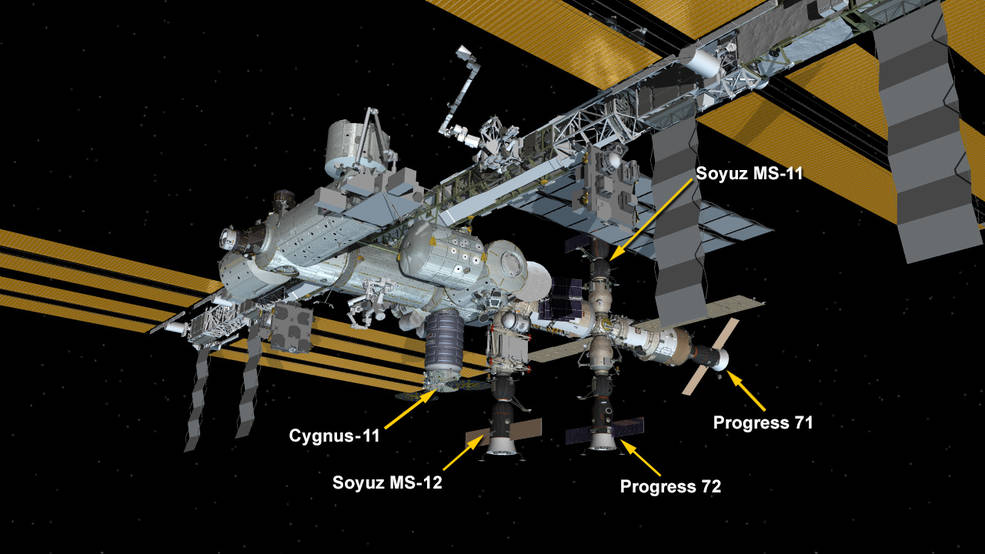
The Cygnus spacecraft, built by Northrop Grumman, has rendezvoused with the International Space Station (ISS) as part of a months-long resupply mission.
The craft was launched from NASA’s Wallops Flight Facility in Virginia on 17th April at 4:46 p.m. ET. It was captured just under an hour later at 5:28 a.m. by Anne McClain of NASA and David Saint-Jacques of the Canadian Space Agency using the station’s robotic arm, and was firmly bolted to the station’s Unity module by 7:31 a.m.
The craft will remain docked at the station until July 23, while the crew take in the 7,600 pounds of research equipment it carried. The equipment is for a variety of science projects relevant to NASA research into future missions to the moon and to Mars.
One example of the science equipment now at the ISS includes materials for measuring the behavior of gels in a microgravity environment, which could be potentially useful for growing food here on Earth or for actually growing materials in space.
Another set of equipment will expand the capabilities of cellular and molecular biology experiments on the station. The Bio-Analyzer can be used by astronauts to quickly test bodily fluids from just a few drops of blood and saliva. The results can show information such as blood cell counts in a few hours as opposed to the much longer time previously which required the freezing of samples.
Further equipment will be used for testing the effect of space exposure on aging, especially looking at how weightlessness affects the aging of the blood vessels and heart. This is important for the long-term health of astronauts and for developing ways to address vascular aging on Earth. It is also known that time in space affects the immune system, so an animal study will learn more about this phenomena by testing the effects of spaceflight on the immune systems of rats.
Finally, a trio of mini robots called Astrobee will be tested to assist the crew. The robots move around using electric fans and sensors to navigate and can grasp onto rails and hold items in space, and can even operate autonomously.
All this equipment will allow a whole new range of research to take place aboard the ISS in the coming months and years.



